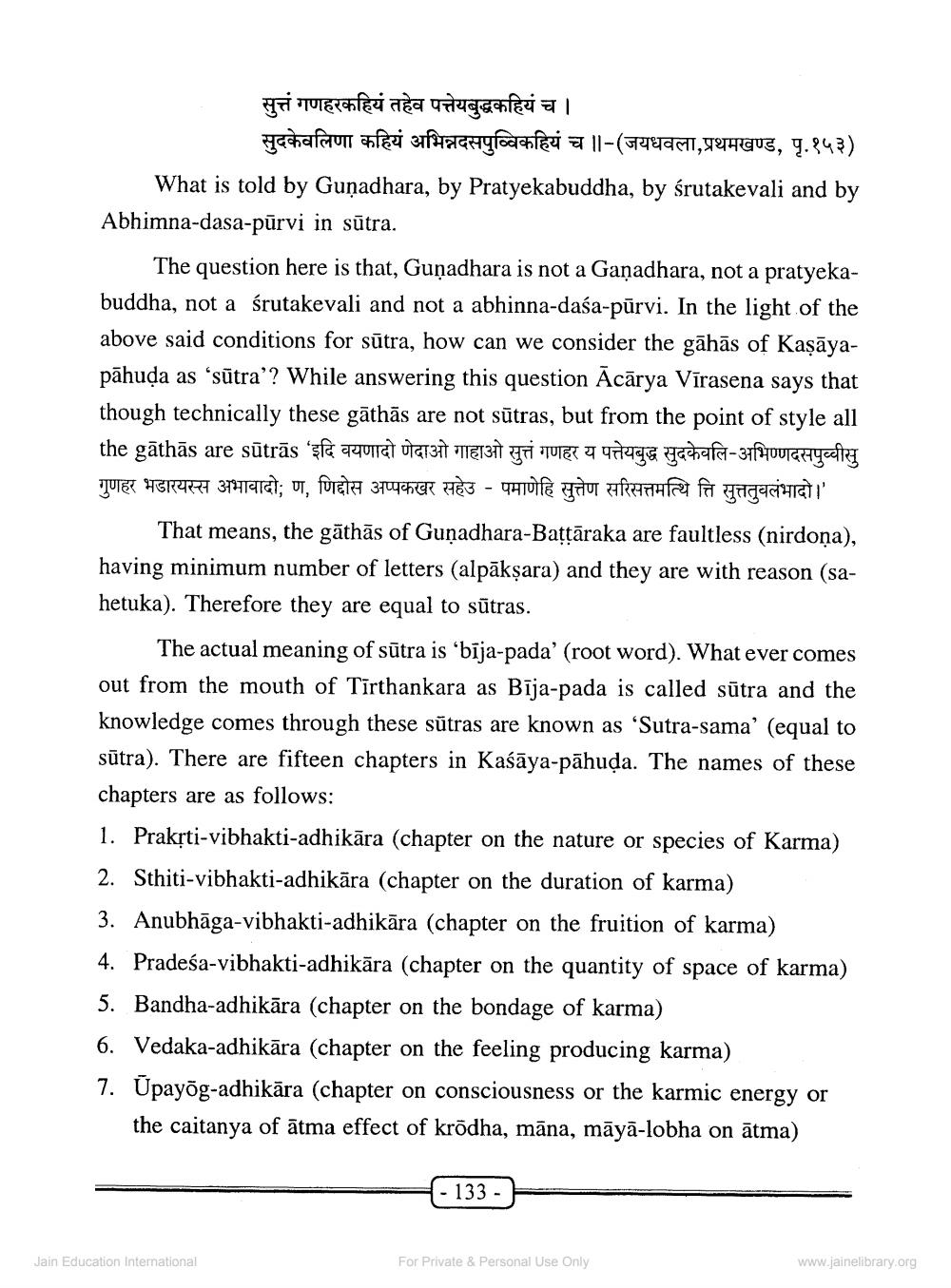________________
सुत्तं गणहरकहियं तहेव पत्तेयबुद्धकहियं च ।
chalatun tai arftachyrochas a 11-(52EAM,4HCUE, .843) What is told by Guņadhara, by Pratyekabuddha, by śrutakevali and by Abhimna-dasa-pūrvi in sūtra.
The question here is that, Gunadhara is not a Gañadhara, not a pratyekabuddha, not a śrutakevali and not a abhinna-daśa-pūrvi. In the light of the above said conditions for sūtra, how can we consider the gāhās of Kaşāyapāhuda as ‘sūtra'? While answering this question Ācārya Vīrasena says that though technically these gāthās are not sūtras, but from the point of style all the gāthās are sūtrās 'fe UITET UTSTZĪT "MEITT UT TU U 499ge gachafe-37fHuurGruyere गुणहर भडारयस्स अभावादो; ण, णिद्दोस अप्पकखर सहेउ - पमाणेहि सुत्तेण सरिसत्तमत्थि त्ति सुत्ततुवलंभादो।'
That means, the gāthās of Gunadhara-Battāraka are faultless (nirdoņa), having minimum number of letters (alpākṣara) and they are with reason (sahetuka). Therefore they are equal to sūtras.
The actual meaning of sūtra is 'bīja-pada' (root word). What ever comes out from the mouth of Tīrthankara as Bīja-pada is called sūtra and the knowledge comes through these sūtras are known as “Sutra-sama' (equal to sūtra). There are fifteen chapters in Kaśāya-pāhuda. The names of these chapters are as follows: 1. Praksti-vibhakti-adhikāra (chapter on the nature or species of Karma) 2. Sthiti-vibhakti-adhikāra (chapter on the duration of karma) 3. Anubhāga-vibhakti-adhikāra (chapter on the fruition of karma) 4. Pradeśa-vibhakti-adhikāra (chapter on the quantity of space of karma) 5. Bandha-adhikāra (chapter on the bondage of karma) 6. Vedaka-adhikāra (chapter on the feeling producing karma) 7. Ūpayõg-adhikāra (chapter on consciousness or the karmic energy or
the caitanya of ātma effect of krõdha, māna, māyā-lobha on ātma)
- 133 -
Jain Education International
For Private & Personal Use Only
www.jainelibrary.org




